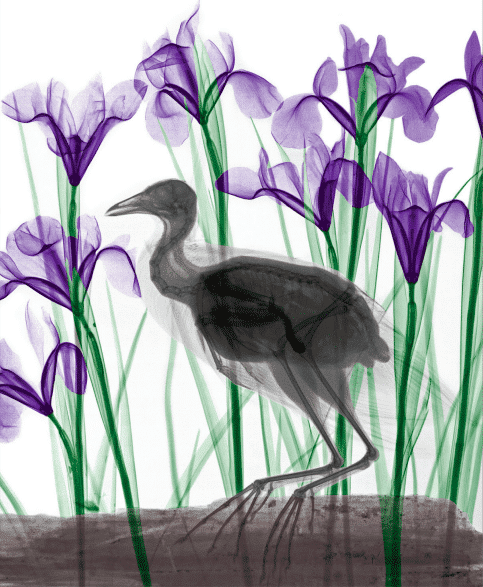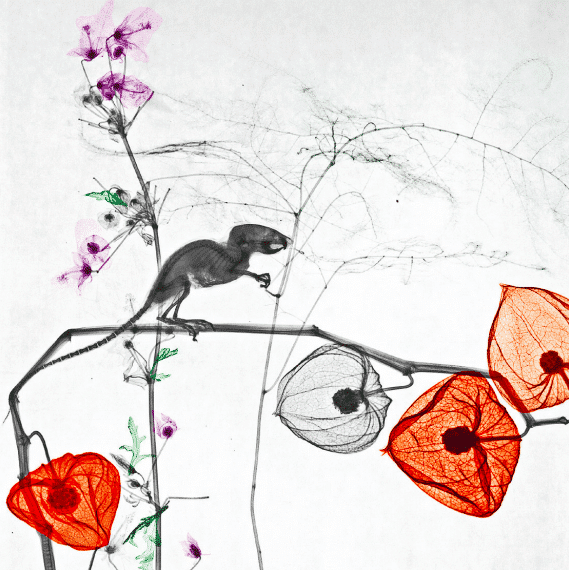SHE SITS ACROSS from us, the middle-aged Black woman in the orange vinyl-upholstered chair, her eyes red and swollen, gripping a tissue that has been disintegrating for the last two hours into bits of dust that dot her pants and the floor beneath her. A Palestinian family—I hear the word Ramallah—huddles in the corner; the women, keening with worry, pull their seats into a tight circle while two men pace around. Near the window overlooking the East River, three black-hatted Jewish men stand and sway, tiny leather Talmuds in hand, while the only woman among them, young and massively pregnant, sips from a Styrofoam cup. An older Asian woman is asleep on a small couch on the other side of the room, where she’s been since my wife and I arrived early in the morning; she’s alone and wrapped in a red down coat. The drone of a television is the only noise, interrupted every fifteen minutes by a computerized female voice calling out a name. The family of. Please to consultation. Consultation is a small windowless room across the hall. Three chairs, a table, a box of tissues, an abandoned, half-empty bottle of water, its neck ringed with fuchsia lipstick.
Moohren and Iris
When we hear the voice, we all turn and stare up at the speaker embedded in the ceiling. Relief when we don’t hear our name. Worry when we don’t hear our name. We gaze at one another and smile weakly. We are strangers, thrown together in this synthetically illuminated sliver of time. Its passage, the waiting, the possibility of healing and life and death, binds us to one another beyond the strictures of language and religion and culture.
One of the Palestinian women gets up for a cup of tea from the vending machine. She carries it to the other side of the room, touches the shoulder of the dozing Asian woman, and silently slides it into her hand.
I have been here for ten hours, waiting for news of my elderly mother, whose surgeon is down the hall, reconstructing her shattered ankle, attaching spongy bone to spongy bone. Susan and I arrived early, when the sunlight off the river was so harsh that the dark mesh window shades were remotely lowered by something or someone we couldn’t see. Now the evening light in the waiting room is the same as it was in the morning; neutralizing by design, it could be dawn, or noon, or two a.m. We wait. All we have is the tincture of time: however long it takes for a body to be repaired so that the healing can begin.
Mouse and Phsyalis
YEARS AGO, I was diagnosed with an aortic aneurysm, which is like having a time bomb living in your chest. When it gets to a certain size, I will have to have robotic surgery, which, if successful, will save my life. The operation requires that the body be chilled to the point where it is technically dead, so that the procedure can be performed with minimal trauma and loss of blood.
What happens to time, I asked Susan, if I’m dead for a little while? If time stops for me, will it also stop for you? Who will sit with you? Who will wait?
Estranged from much of my family and no longer part of the large clan of my birth, I envision my wife sitting alone, like the two women in the waiting room. Susan will wonder as the hours tick by: Do robots even know what to do with hearts? Will it be tender and careful? Our first trip together after my diagnosis was to Chimayo, New Mexico, where the sun beat down hard on the back of my neck in the courtyard of the Santuario; we went not as pilgrims but as agnostics breathing in healing air so crisp that it has an edge.
Go outside and let the sunlight warm you, my grandmother would say when I was sick as a child. Breathe deep. Let the air and the light mend you.
I live in New England, not far from the ocean; saltwater is a curative. When we returned home from the Southwest, I went to the snow-covered beach, lifted my shirt, and laid a seawater-soaked tea towel over my broken heart.
How does healing occur in an artificial atmosphere where voices are computerized, an invisible hand lowers shades, and a machine dispenses tea into Styrofoam cups? Waiting together in a room denuded of the natural, we are no longer strangers. The human instinct, when grief and joy are a breath away, is to form a circle; the act of waiting together is not a sentimental one. To see people, related by blood or not, sitting quietly in a badly furnished, airless room is to come face-to-face with the ancient. We don’t wait for the tumor to be excised or the bones to be plated, the heart to be repaired, or the incision to be stitched. We wait as evidence of life and circle as a way to peer together over the edge of possibility. We wait because the human condition is not to be alone and not to be abandoned; we heal one another.
When the computerized voice calls out the last name of the Black woman—Please to consultation—the Orthodox woman tells her to leave her things; she will watch them. When she returns, we all stand: Is everything okay?
Yes, she cries. He’s okay.
She sits, head in her hands, and weeps, exhausted, grateful, grief-stricken for the state of her heart.
The next name won’t be called for another fifteen minutes. Someone goes out into the world and returns with proper cups of tea for all of us. We cradle them and drink with a thirst that is boundless.






Comments
It seems we’re seen and we too see when we share in “the waiting.” Being present, aware, seems to be heightened when we’re so aware of our inability to be in control in the waiting room. This is a beautiful, tender share.
This took me back to the waiting rooms of my life – when my dad had cancer 9 years ago. Being in a waiting room then and being in a waiting room post covid have been such vastly different experiences. He had a stroke last year and again we entered the world of the waiting room. The feeling of togetherness was still there but it was different, there was a difference, seating, visiting, waiting, masking, sanitizing took away from the collective bond strangers share. The circles that were formed before could no longer be formed in the physical space.
Waiting rooms are the toughest. I still shiver when I enter hospitals because they smell of the waiting rooms I spent long hours in as a child — waiting, waiting, for something to heal my cancer-ridden mother. Thank you for this very real slice of life.
Please Note: Before submitting, copy your comment to your clipboard, be sure every required field is filled out, and only then submit.